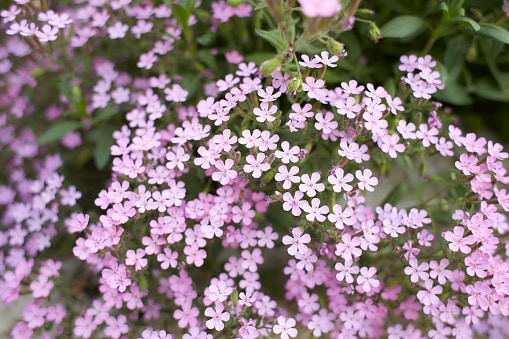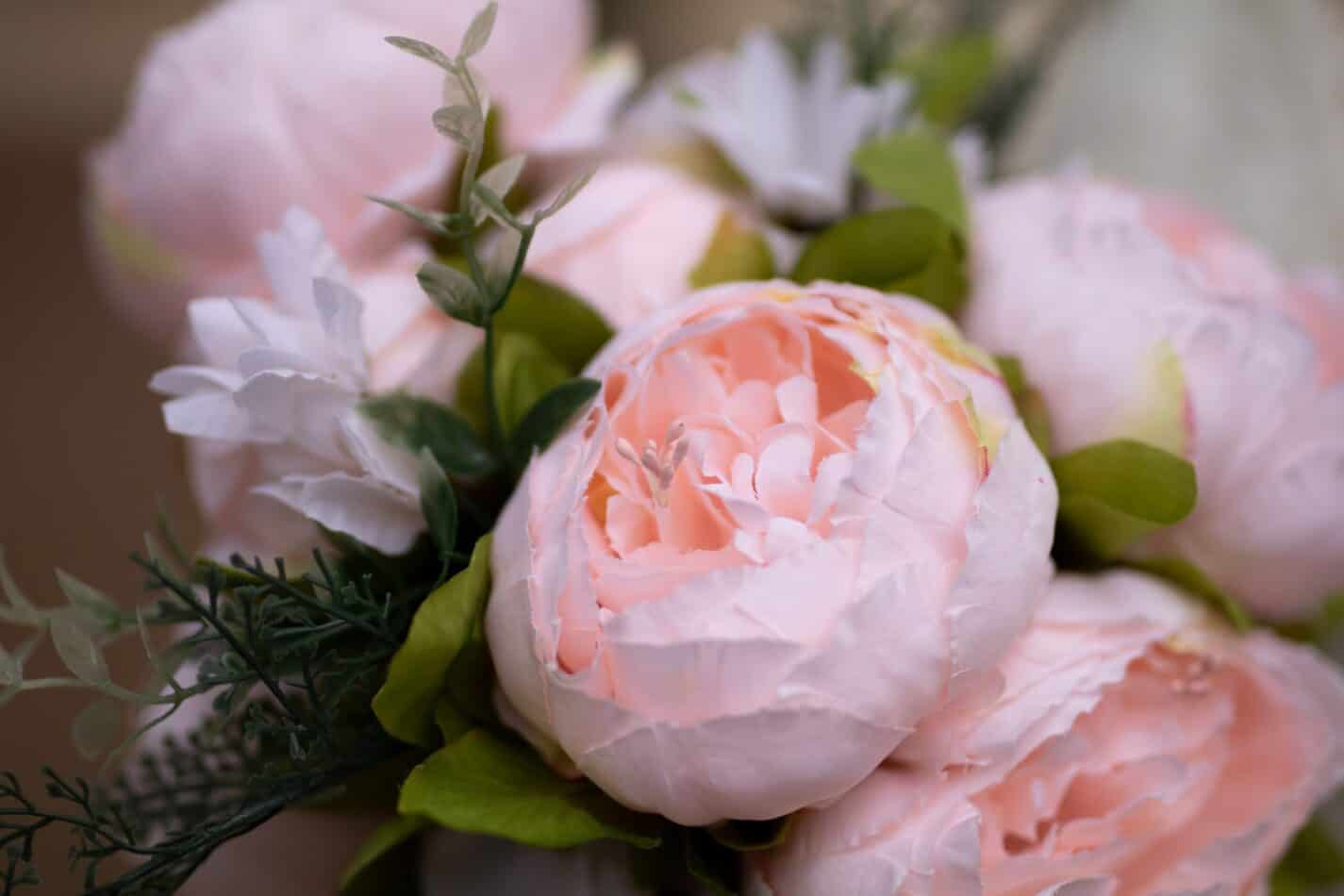Rock Soapwort, scientific name Saponaria Ocymoides, is an RHS award-winning mat-forming semi-evergreen perennial that produces blooms for around three to four weeks. It belongs to the family Caryophyllaceae as a member of the genus Saponaria. It is a perennial plant, which means it can live for more than two years.
Rock Soapwort is native to North America and Europe. It has bright pink flowers that cover most of the foliage. This flower is easy to grow and is hardy in zones 2 – 9 making it a great, low maintenance choice for any garden. It is suited best for cooler climates, as it cannot tolerate hot or humid summers. It is an excellent choice as it can climb rocks and walls as it matures, making it ideal for creating a lowgrowing or vertical accent.
How To Plant
When planting Rock Soapwort, it is best to use either a container or a garden. The soil should be well-drained with a pH of between 6.0 and 7.5. The soil should also be kept moist, but not wet, and allowed to dry out slightly between waterings. For optimum growth, choose a location that receives full to partial sun for 4 – 6 hours. It will tolerate most soil types but does best in sandy, loamy soil.
Once the soil is prepped, it is time to plant. Rock Soapwort can be planted at any time of the year (depending on your climate). For a container, use a quality-potting soil. If you are planting a garden, dig a hole that is twice the size of the pot and take the soil away. Place the plant in the hole and fill with soil around it, stamp down the soil to give it a secure footing. After planting, water thoroughly and add mulch around the plant to retain moisture and prevent weed growth.
Etymology
The name “Saponaria” is derived from the Latin for “soap”, likely due to the fact that its roots have been used as a soap substitute in the past. Despite its name, Rock Soapwort will not clean your clothes!
Meaning and Symbolism
Rock Soapwort is associated with abundance, prosperity, joy, and new beginnings due to its cheerful blooms. The flowers of Rock Soapwort can be used in a variety of ways; dried, used in potpourri, as a cut flower, or in flower crowns.
History, Mythology, and Religious Significance
The Native American tribes of New England and the Canadian Maritimes used Rock Soapwort to treat wounds and other medical issues that would arise during their travels. The first settlers of the area would often use the saponin that is found within the roots to wash their clothing and dishes.
The Cree people believed that a species of Rock Soapwort, in particular, was capable of bringing back a deceased loved one when its sap was used to crown the head of the deceased person.
Flower Varieties and Their Defining Characteristics
There are a few varieties of Rock Soapwort that can be found, each of which has unique qualities that make it distinct from the others.
- Saponaria Ocymoides: This variety of Rock Soapwort is generally 1-2 feet tall, with bright pink flowers and olive-green foliage. It is hardy in zones 2-9 and is ideal for cooler, mountainous climates.
- Saponaria Officinalis: This is the most cultivated of all varieties of Rock Soapwort. It is a 1-2 feet tall perennial, with large clusters of deep, magenta flowers and dark green foliage. It is hardy in zones 5-10 and is tolerant of sunny and partially shaded conditions.
How To Pot And Repot
Pot and repotting your Rock Soapwort is a very straightforward process and will help ensure your plant receives the necessary amount of water, proper drainage, and ventilation.
Start by choosing a pot that is slightly bigger than the actual plant, such as a terra-cotta pot or plastic pot. Prepare the pot by adding a layer of pebbles on the bottom and then filling half way with potting soil. Gently take your Rock Soapwort out of its original pot, careful not to damage the roots. Now place your Rock Soapwort in the new pot, making sure that the soil level is the same as it was in the original pot, and fill the pot with potting soil.
Make sure that you water your Rock Soapwort thoroughly right after you plant it in the new pot and then once a week or when the topsoil is dry. You should repot your Rock Soapwort as soon as it starts outgrowing its pot, usually every 1-2 years.
How To Prune
Pruning is an essential part of caring for your plant and should be done annually. Pruning will help your plant look its best, keep the flowering to the desired amount, and maintain the shape and balance of the plant.
Before you start pruning, make sure to target the areas that need to be cut back. Begin by cutting off any dead or diseased stems and foliage. You should then remove all the foliage and stems that have become “leggy” and lost their shape. Focus on pruning the top of the plant as this will encourage new growth and more flowers to bloom. Finally, you should thin out any stems that are overly congested.
When pruning, make sure to use sharp, sterile tools and avoid cutting too many stems back. After pruning, make sure to give your plant a good watering and plenty of fertilizer.
How To Propagate
Propagating Rock Soapwort is relatively easy and can be done using seeds, cuttings, or division.
If propagating using seeds, collect the seeds when ripe. This is generally during the winter or early spring months. Gently rinse the collected seeds off and spread on paper towel. Let them dry before carefully storing in an envelope. Plant the seeds in well-draining potting mix and lightly cover with soil. Place the pot in a warm location and keep the soil moist, not wet. The seeds should begin to germinate after 3-4 weeks.
For propagating using cuttings, take 3-4 inch cutting from around the stems of a healthy specimen. Be sure to take off any leaves on the lower half of the stem and make sure the end of the stem is not damaged. Place the stem in a warm area for about a week, allowing the end of the stem to dry and form a callus. Once this has happened, plant the rooted end into a pot of potting mix, watering thoroughly.
You can also propagate Rock Soapwort through division. When rootbound, your Rock Soapwort will need to be divided into multiple sections. Carefully dig up the plant, being careful to not damage the roots. Separate the Rock Soapwort by pulling apart the clumps of roots and replant them in their own pot.
Common Pests and Diseases
Rock Soapwort is generally a low-maintenance plant and does not have many major issues when it comes to pests and diseases. However, there are a few things to look out for.
The most common pests are aphids, spider mites, and slugs have been known to feed on the foliage and flowers of Rock Soapwort. To get rid of these pests, spray your plant with insecticidal soap or neem oil.
The most common diseases that can affect this plant is root rot, which is caused by the plant being placed in overly wet soil. To prevent this, make sure you are using well-draining soil and avoid overwatering it. Also, do not let the water pool around your plant and make sure it is planted in an area that receives good airflow and is exposed to sunlight.
Frequently Asked Questions
Q: What type of soil does Rock Soapwort prefer?
A: Rock Soapwort prefers well-draining soil and does best in soil that has a pH between 6.0 and 7.5. It will tolerate most soil types but does best in sandy, loamy soil.
Q: How much sun does Rock Soapwort need?
A: Rock Soapwort needs full to partial sun for 4-6 hours per day.
Q: Does Rock Soapwort need to be pruned?
A: Rock Soapwort should be pruned annually to help the plant stay healthy and encourage new growth.
Fact Sheet
| Rock Soapwort | Saponaria Ocymoides |
|---|---|
| Family | Caryophyllaceae |
| Plant Type | Perennial |
| Mature Size | 1-2 feet Tall |
| Sun Exposure | Full to Partial Sun |
| Soil Type | Sandy, Loamy Soil |
| Soil pH | 6.0-7.5 |
| Bloom Time | 3-4 Weeks |
| Flower Color | Bright Pink |
| Hardiness Zone | 2-9 |
| Native Area | North America and Europe |
What we love from Amazon this week
Buy these wonderful flowers directly from Amazon:















